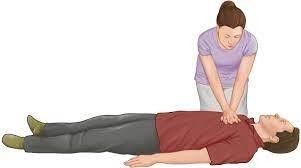A 3-year-old boy was successfully toilet trained prior to his admission to the hospital for injuries sustained from a fall. His parents are very concerned that the child has regressed in his toileting behaviors. Which information should the nurse provide to the parents?
Diapering will be provided since hospitalization is stressful to preschoolers.
A retraining program will need to be initiated when the child returns home.
A potty chair should be brought from home so he can maintain his toileting skills.
Children usually resume their toileting behaviors when they leave the hospital.
The Correct Answer is D
The correct answer is choice d. Children usually resume their toileting behaviors when they leave the hospital.
Choice A rationale:
While it is true that hospitalization can be stressful for preschoolers, providing diapers may not be necessary. Regression in toileting is often temporary and related to the stress of the hospital environment.
Choice B rationale:
Initiating a retraining program immediately after returning home may not be necessary. Most children will naturally resume their previous toileting behaviors once they are back in a familiar and less stressful environment.
Choice C rationale:
Bringing a potty chair from home can be helpful in some cases, but it is not always practical or necessary. The child is likely to resume normal toileting behaviors once they are back in their usual environment.
Choice D rationale:
This is the correct answer because children often regress in their toileting behaviors due to the stress and unfamiliarity of the hospital environment. Once they return home, they typically resume their previous toileting habits.
Nursing Test Bank
Naxlex Comprehensive Predictor Exams
Related Questions
Correct Answer is ["B","C","D","E"]
Explanation
Choice A rationale: Misplacing car keys occasionally is a common occurrence and may not necessarily indicate Alzheimer's disease. It can happen to anyone, especially when distracted or in a hurry.
Choice B rationale: Difficulty performing familiar tasks, such as cooking a meal or driving to a familiar location, is an early warning sign of Alzheimer's disease. It indicates changes in cognitive function.
Choice C rationale: Losing sense of time, such as not knowing the date, day of the week, or season, can be an early indicator of Alzheimer's disease. It reflects impairments in temporal orientation.
Choice D rationale: Problems with performing basic calculations, such as managing finances or following a recipe, are early signs of Alzheimer's disease. It shows a decline in cognitive abilities related to numbers and problem-solving.
Choice E rationale: Becoming lost in a usually familiar environment, such as getting disoriented in one's own neighborhood, is a significant early warning sign of Alzheimer's disease. It suggests spatial and memory impairments.
Correct Answer is D
Explanation
A) Incorrect- Observing for swelling at the fracture site is important for assessing the client's musculoskeletal condition, but it is not the priority intervention in this situation. The absence of spontaneous respirations and palpable carotid pulse indicates cardiac arrest, and immediate intervention is needed.
B) Incorrect- Analyzing the cardiac rhythm in another lead is not the first priority when the client is in cardiac arrest. Cardiopulmonary resuscitation (CPR) should be initiated immediately to restore circulation.
C) Incorrect- Obtaining a 12-lead electrocardiogram is not the initial intervention in a client in cardiac arrest. CPR and defibrillation (if indicated) are the immediate actions to provide circulation and oxygenation to the vital organs.
D) Correct- The absence of spontaneous respirations and palpable carotid pulse indicates cardiac arrest. In this situation, immediate initiation of cardiopulmonary resuscitation (CPR) is critical to provide circulation and oxygenation to the vital organs. Chest compressions are the initial step to address cardiac arrest and ensure blood flow to the body.

Whether you are a student looking to ace your exams or a practicing nurse seeking to enhance your expertise , our nursing education contents will empower you with the confidence and competence to make a difference in the lives of patients and become a respected leader in the healthcare field.
Visit Naxlex, invest in your future and unlock endless possibilities with our unparalleled nursing education contents today
Report Wrong Answer on the Current Question
Do you disagree with the answer? If yes, what is your expected answer? Explain.
Kindly be descriptive with the issue you are facing.
